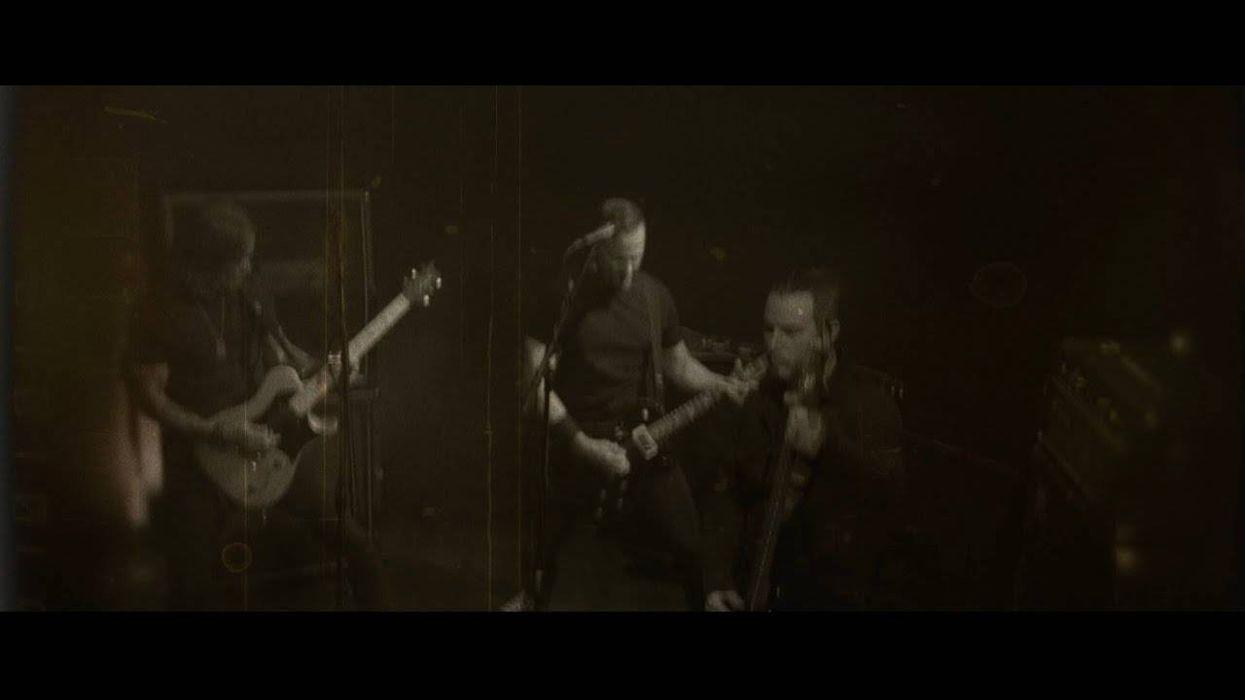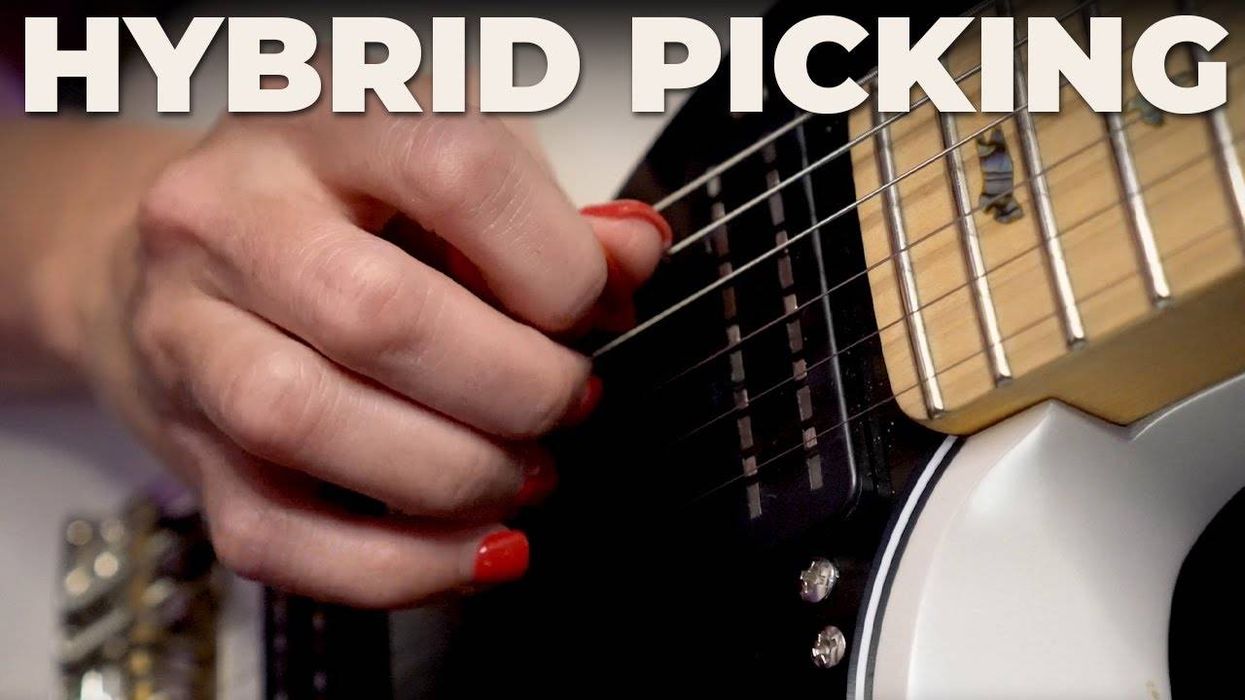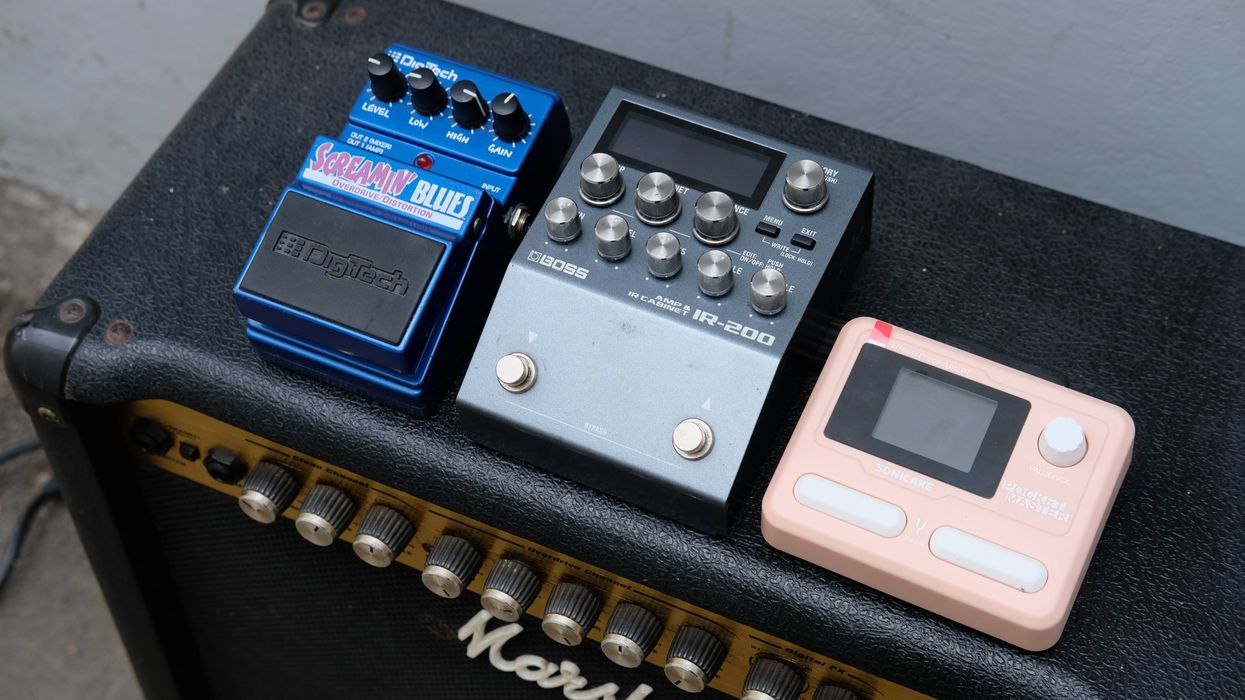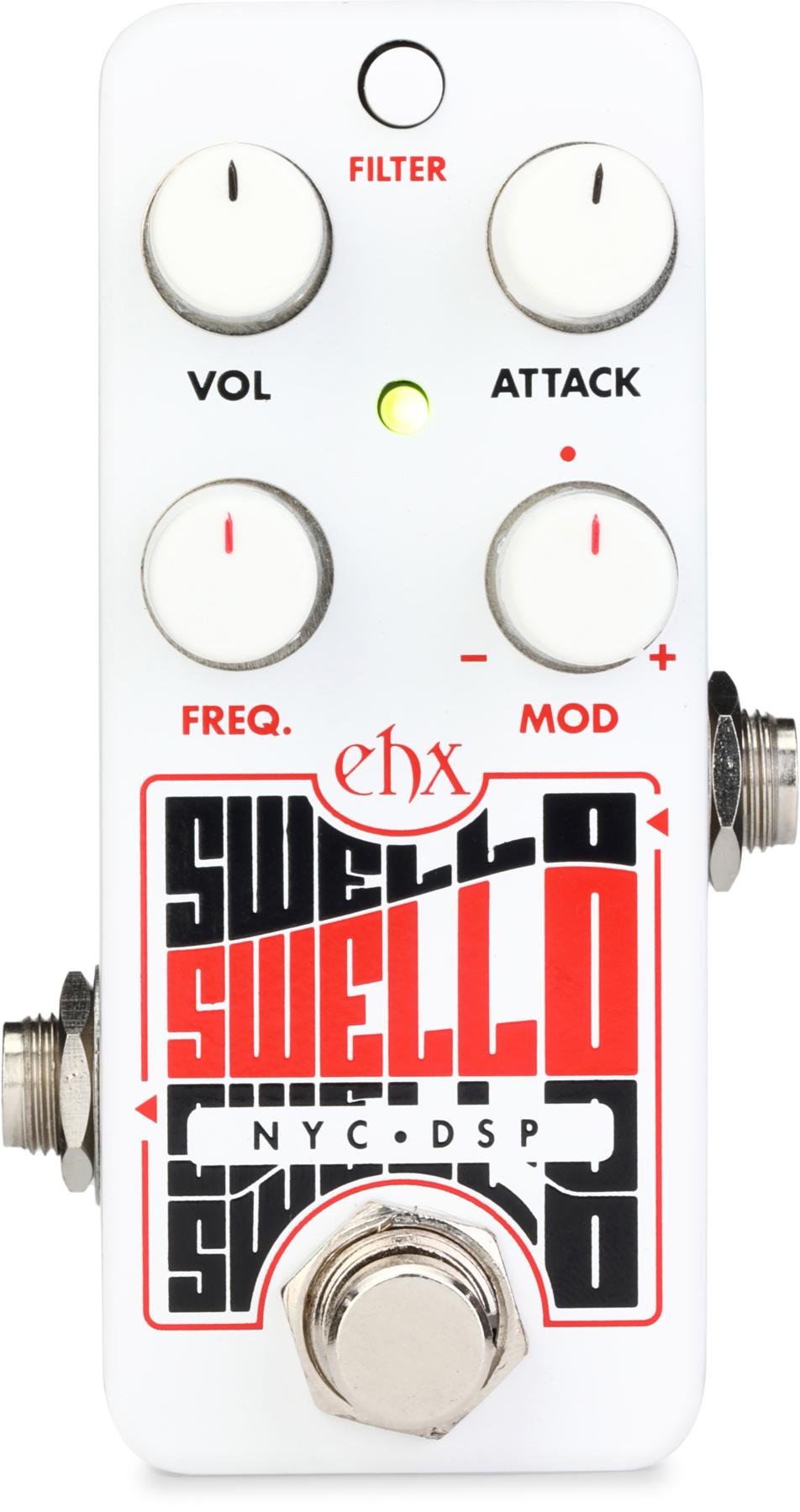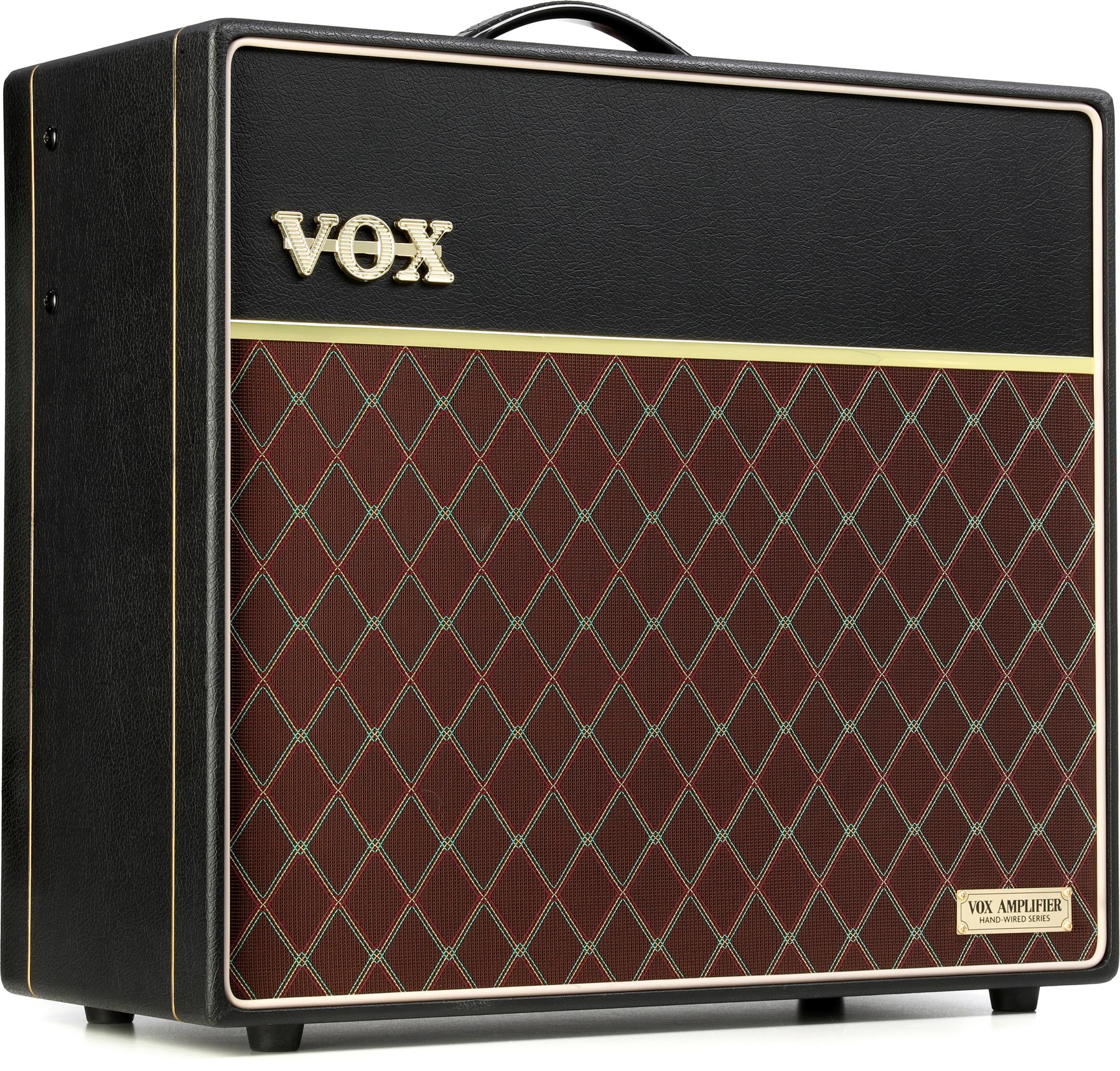 | |
Watch Video Review: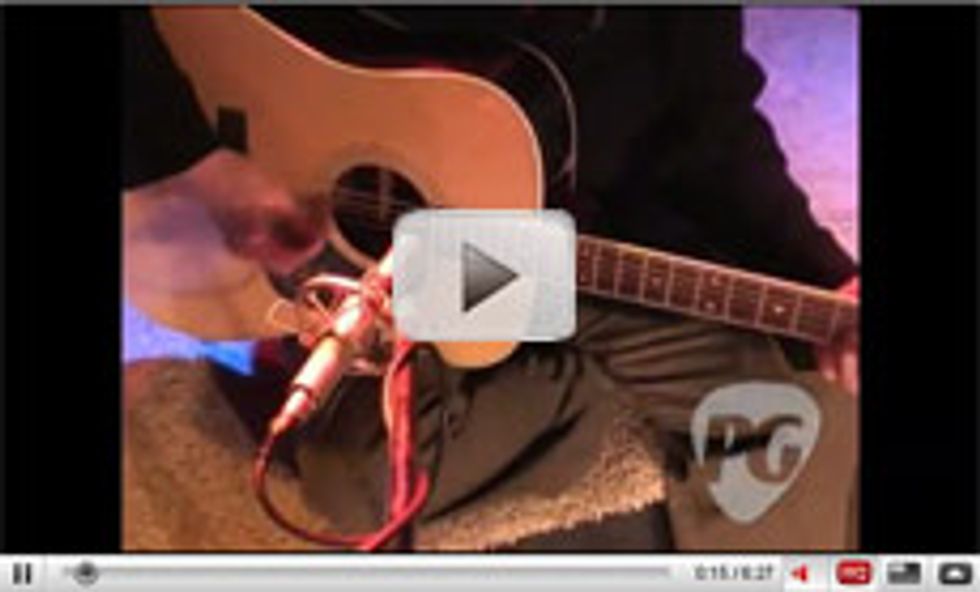 |
Not that it isn’t a lovely guitar: clean and simple, often equal understated elegance—and there’s something wonderful about letting a guitar speak so gently for itself. Glenn Frey doesn’t have anything to prove to anybody about his chops, or his skill as a songwriter, so why not simply replicate the axe that, to quote Takamine’s Web site, “wrote rock ‘n roll?”
I have to confess to a bit of shock when I opened the case; I was expecting something artsier. But after it slipped into tune and I started to play, I was amazed. This thing sounds rich and full, the bass is warm without being mushy, and the treble is clear but never grating. And it plays like butter.
There’s Gotta be a Story Here
In 2008, Glenn Frey approached Takamine with an unusual request; basically, he wanted them to clone his old Takamine EF360S, which he got in 1994. They had already been considering a Glenn Frey Signature model, so the request was very timely. The only difference between his 1994 guitar and the new model is that the new back is solid rosewood rather than laminated, and there is a graceful little GF logo on the headstock.
The pickup system is what really made Takamine famous. In fact, those proprietary electronics haven’t changed much since Frey got the original. The pickup itself is built into the top, and the onboard preamp, though upgraded, is still basically the same as it was on Frey’s 1994 EF360S.
I got to talk with Frey between cities on a recent leg of the Eagles’ North American tour. He’s clearly very excited about the guitar, very proud of it, and it’s proving to be as great on stage as his original, which he affectionately calls his Number One. “It’s warm,” he says, “but especially for playing live it’s important to have a guitar with a distinct high end and not too many overtones in the low and mid ranges. That’s a great sound for sitting in your living room, but a live sound engineer has to squash it. For mixing live, it’s better to have a guitar that’s perfect mid-totop, because you can always add lows. That switches the posture from defensive mixing— taking something away from the guitar—to adding to it in order to fill a few things out.”
The process of cloning a guitar is complicated and tedious, but fascinating. Frey said, “Some designers and engineers from Takamine took my Number One for a couple days and made extensive measurements of every part of the guitar, from the thickness of the top and exact placement of the braces, to the thickness of the finish—everything about it.” After making copious notes, they returned to the factory to make two prototypes: one exactly like the original with a laminated back, and one with a solid back. Frey decided he liked the solid back best, so that became the Glenn Frey model.
Regarding the almost Spartan simplicity of the instrument, Frey said it was important to him to keep the guitar affordable as well as extremely functional. The key for him was sound and usefulness. He explained that, “the finish and inlay and bells and whistles don’t have anything to do with that. We took a pretty straightforward approach to it; the only thing it has is the little ‘GF’ on the headstock. I’ve had ten or twelve of these in my hands, and they all sounded great and needed very little set up.”
The Nitty Gritty
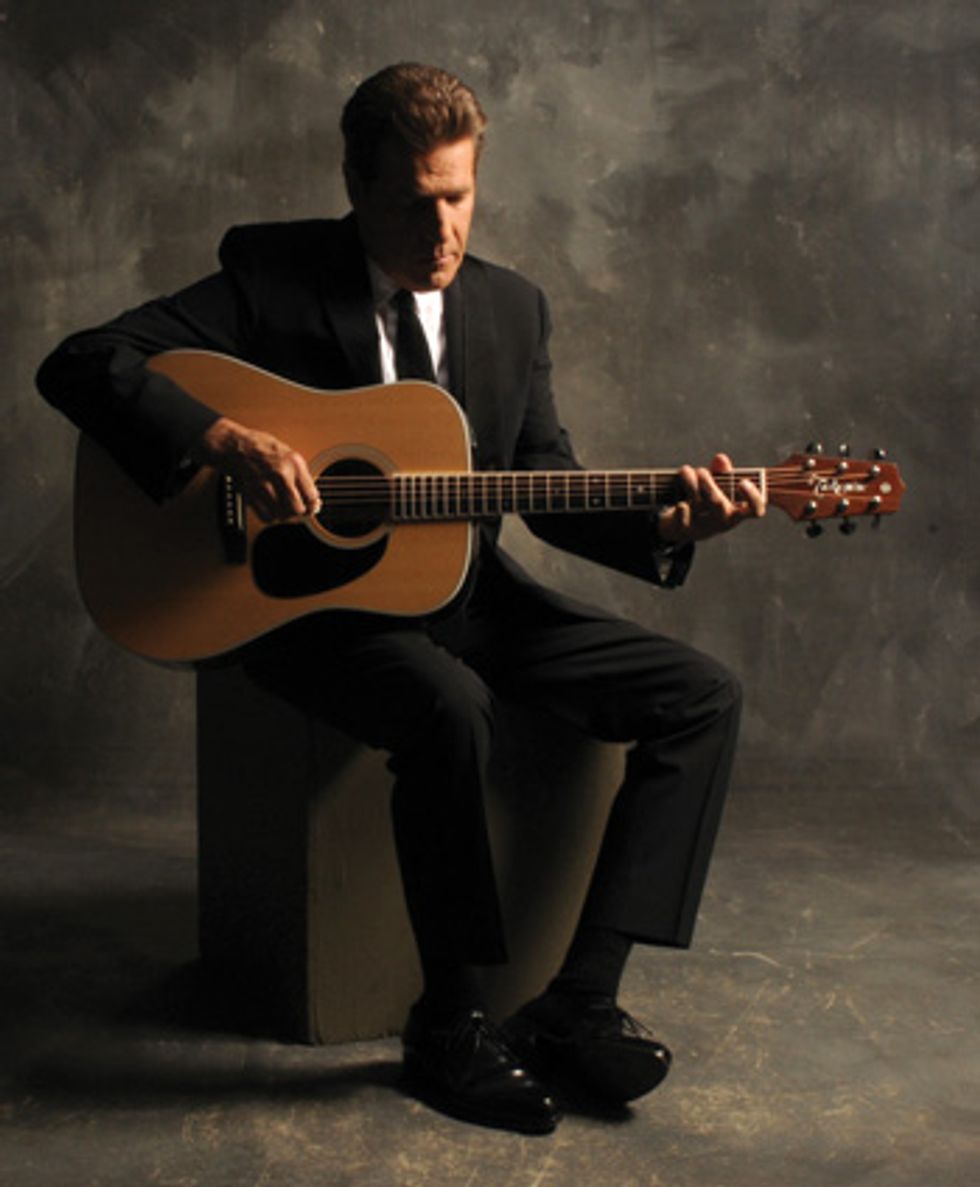 Possibly the most amazing thing about Takamine guitars is their incredible consistency. Frey’s description of the EF360GFs he’s played—warm, perfect mid-to-top without a lot of overtones in the lows, sounds and plays great—accurately describe this guitar, too. That’s part of their promise: if you play one EF360GF, you’ve played them all. Takamine guitars are the choice of countless touring bands simply because they offer few surprises—in a really good way. For somebody who lives and dies by the axe, that’s extremely important.
Possibly the most amazing thing about Takamine guitars is their incredible consistency. Frey’s description of the EF360GFs he’s played—warm, perfect mid-to-top without a lot of overtones in the lows, sounds and plays great—accurately describe this guitar, too. That’s part of their promise: if you play one EF360GF, you’ve played them all. Takamine guitars are the choice of countless touring bands simply because they offer few surprises—in a really good way. For somebody who lives and dies by the axe, that’s extremely important. That doesn’t mean this guitar isn’t fun to play or lacks personality. The neck is comfortable, much like a Les Paul neck, actually. At 1-11/16” wide and just a little chubby, it’s good for chord strumming or for singer-songwriter- type fingerstyle playing, though after tackling some intricate fingerstyle pieces, I found myself wanting a wider fretboard and string spacing.
One advantage to having a guitar so balanced on the high-to-mid side is how well it fares in an ensemble setting. It can be heard clearly through the mix, making it ideal for Eagles-style rhythm duties, or even Bluegrass-style flatpickin’. Having spent most of my gigging life as a solo guitarist, I found the lack of oomph in the lows a bit disconcerting; with my trio, where bass is somebody else’s responsibility, it was much more satisfying.
The electronics are the other key to Takamine’s success. The built-in pickup and onboard preamp sounded great through any amp or PA I played through; it’s practically soundman-from-hell proof. There’s a 3-band EQ, Volume control and a tuner right under your nose, making it effortless to tweak your sound on the fly. The tuner responds almost fast enough to be more useful than frustrating. Battery changes are convenient and lightning quick.
Recording
I did a little experimental recording with the EF360GF and a Zoom H4 hand-held recorder, using the built in stereo mics (at 24bit 96K). The clarity of the mids and highs was just stunning, and you could hear every detail. The highs sparkled, while the mids offered oomph without any nasal unpleasantness. The lows were warm without being muddy. This guitar really shines when you’re strumming big chords, and it positively glows when dropped into DADGAD. I look forward to hearing Frey’s guitar mixed into future CDs.
The Final Mojo
The EF360GF is a remarkable instrument, and Glenn Frey has every reason to be proud of it. Takamine is now going through the same cloning process with his Number One 12-string, and if this guitar is any indication, that one should be equally remarkable. At a reasonable price point, the playability, onboard electronics and terrific sound make this guitar a fantastic value.
Buy if...
you play a lot of gigs and need a rock-solid, great playing and sounding axe.
Skip if...
most of what you do is intensive and intricate solo fingerstyle playing.
Rating...
MSRP $1999 Street $1399 - Takamine - takamine.com |



